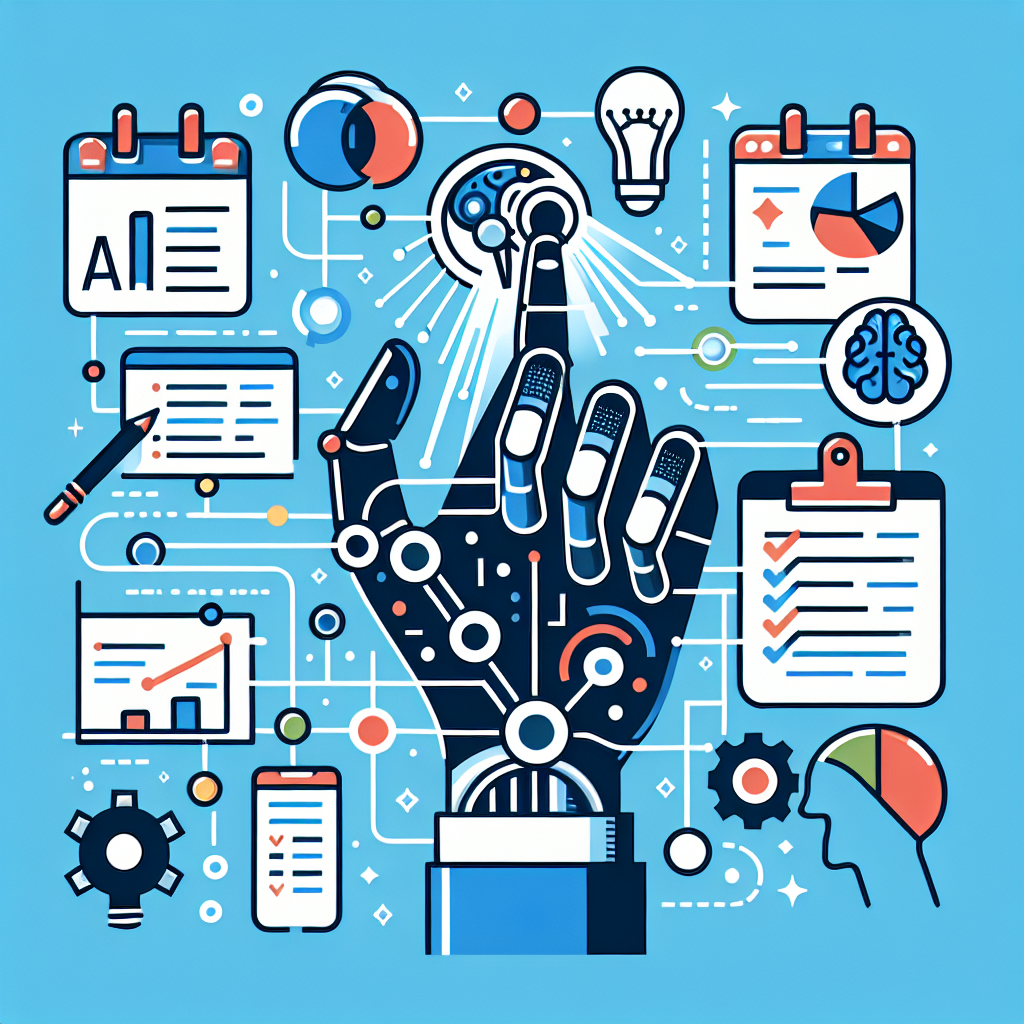In today’s fast-paced and interconnected world, effective project collaboration is essential for the success of any organization. With teams spread out across different locations and time zones, the need for efficient communication and coordination has never been greater. This is where artificial intelligence (AI) comes in, offering a range of tools and technologies that can streamline project collaboration and improve overall efficiency. In this article, we will explore how AI can enhance project collaboration and provide some common FAQs about this emerging technology.
1. Enhanced Communication
One of the key benefits of AI in project collaboration is improved communication. AI-powered chatbots can facilitate real-time communication between team members, allowing them to quickly exchange information, provide updates, and ask questions. These chatbots can also help automate routine tasks, such as scheduling meetings, sending reminders, and sharing important documents. By reducing the need for manual communication and coordination, AI can free up team members to focus on more strategic tasks and projects.
2. Intelligent Task Management
AI can also help streamline project management by providing intelligent task management capabilities. AI algorithms can analyze project data, identify dependencies and priorities, and suggest optimal task assignments and timelines. This can help project managers make more informed decisions and ensure that projects are completed on time and within budget. AI-powered project management tools can also track progress, identify bottlenecks, and provide recommendations for improving efficiency.
3. Predictive Analytics
Another key advantage of AI in project collaboration is its ability to provide predictive analytics. By analyzing historical project data and patterns, AI algorithms can forecast future trends, identify potential risks, and suggest strategies for mitigating them. This can help project teams anticipate challenges, make proactive decisions, and minimize the impact of unforeseen events. Predictive analytics can also help optimize resource allocation, improve project scheduling, and enhance overall project performance.
4. Virtual Collaboration
AI-powered virtual collaboration tools can also help improve project collaboration by enabling teams to work together remotely. Virtual reality (VR) and augmented reality (AR) technologies can create immersive and interactive virtual workspaces where team members can collaborate in real time, regardless of their physical location. This can enhance team engagement, foster creativity, and enable more effective communication and collaboration. Virtual collaboration tools can also help reduce travel costs, increase productivity, and improve work-life balance for team members.
5. Automation of Routine Tasks
AI can automate routine tasks and processes, such as data entry, file management, and report generation, freeing up team members to focus on more strategic and value-added activities. AI-powered automation tools can help streamline workflows, reduce errors, and increase efficiency. By automating repetitive tasks, AI can also help improve project quality, consistency, and reliability.
6. Personalized Recommendations
AI can provide personalized recommendations and insights to help team members make better decisions and improve project outcomes. AI algorithms can analyze individual preferences, skills, and performance data to suggest relevant training opportunities, project assignments, and career development paths. This can help team members enhance their skills, grow their careers, and contribute more effectively to project success. Personalized recommendations can also help improve team motivation, engagement, and retention.
7. Common FAQs about AI in Project Collaboration
Q: How can AI improve project collaboration?
A: AI can improve project collaboration by enhancing communication, streamlining project management, providing predictive analytics, enabling virtual collaboration, automating routine tasks, offering personalized recommendations, and optimizing resource allocation.
Q: What are some examples of AI-powered project collaboration tools?
A: Some examples of AI-powered project collaboration tools include chatbots, task management software, predictive analytics platforms, virtual collaboration tools, automation software, and personalized recommendation engines.
Q: How can organizations implement AI in project collaboration?
A: Organizations can implement AI in project collaboration by investing in AI-powered tools and technologies, training team members on AI best practices, integrating AI into existing project management processes, and measuring the impact of AI on project outcomes.
Q: What are some potential challenges of using AI in project collaboration?
A: Some potential challenges of using AI in project collaboration include data privacy and security concerns, ethical considerations related to AI decision-making, the need for ongoing training and support, and the risk of over-reliance on AI technology.
Q: How can organizations measure the impact of AI on project collaboration?
A: Organizations can measure the impact of AI on project collaboration by tracking key performance indicators (KPIs), such as project completion rates, time to market, cost savings, team satisfaction, and customer feedback. By analyzing these metrics, organizations can assess the effectiveness of AI in improving project collaboration.
In conclusion, AI has the potential to revolutionize project collaboration by enhancing communication, streamlining project management, providing predictive analytics, enabling virtual collaboration, automating routine tasks, offering personalized recommendations, and optimizing resource allocation. By leveraging AI-powered tools and technologies, organizations can improve team productivity, efficiency, and effectiveness, leading to better project outcomes and overall business success. As AI continues to evolve and mature, its role in project collaboration will only become more prominent, making it essential for organizations to embrace this transformative technology and harness its full potential.

